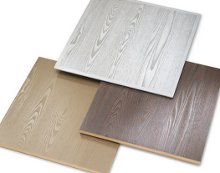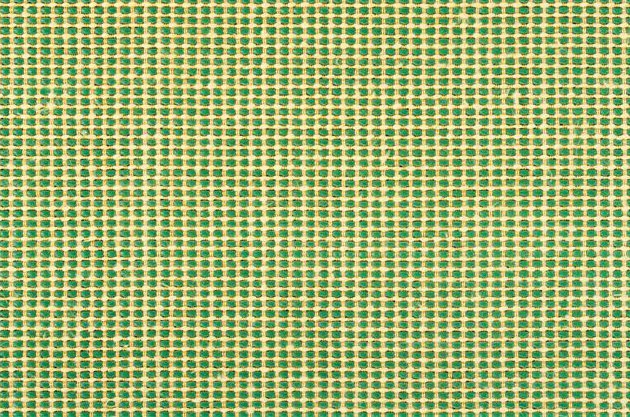Close to nature
27 January 2015Press plate and press pad manufacturer Hueck Rheinische has been busy developing new products.
The origin of Hueck Rheinische GmbH goes back to the merger of Hueck Engraving and Rheinische Press Pad GmbH in 2007.
Rheinische Press Pad had a long tradition in textile manufacturing, while Hueck can look back to 1938, when it started with the production of large sized brass and aluminium plates in 1938. In 1977 the first textured press plates were manufactured in steel and brass.
Today, Hueck Rheinische GmbH is based in Viersen (Dusseldorf region) and has a production facility in Stolberg/Rheinland. Its operations also include its own design studio.
One of the company's biggest messages currently, on the press plate side, is adding more value to the surface with its chromium plating techniques for the production of registered embossed surfaces.
Following the motto 'close to nature', the technology is designed to give surfaces special character and an exceptional natural feel. Hueck said that its customers could use this natural looking surface on all surfaces of panels, in any colour.
"Thus the customer is given the opportunity to respond to different current trends in the woodworking industry, with only one press plate design," it said. "This is what the last big furniture fairs have clearly shown."
A new highlight is Hueck's Dali-Ash registered embossed press plate design which, through the balanced interaction of glossy and matt parts, is designed to give a special character and a pleasant feel.
This new structure is designed to work either on dark or very bright plain colours in order to give the end-user some interesting applications. Hueck Rheinische says customers are therefore able to use the new synchronous press plate structures to cover a large range of products.
In order to give inspiration to customers, the company maintains an assortment of more than 13,000 decors - from a wood grain replica through imitation stone surfaces, up to trend-setting 'graphic' surfaces.
Its textured and smooth surfaces can be found in the furniture, interior construction, flooring and wall panel sectors, while a variety of surfaces for technical use complete the portfolio.
Development work in gloss-controlling processes has led to four fundamental processes being built into the products, called Heliochrome, Lunarchrome, Stratochrome and Variochrome. These allow Hueck Rheinische to achieve gloss-filled pores and deep mat surface areas in different shapes, but also provide what it calls an unprecedented interaction of different gloss levels and shapes of gloss on one and the same textured surface.
There have also been developments in Hueck Rheinische's range of press pad solutions with the addition of the highly elastic SINAS VITO TEXTURA press pad for optimising melamine coating operations in short cycle presses.
Hueck Rheinische says that the pad, comprising its patented elastomer recipe (weft thread); and aramid fibres and brass wire (warp thread), has an improved padding effect. Due to higher silicone content, the thickness of this pad has been increased and is tailor-made for deep press plate textures.
"SINAS VITO TEXTURA has proved to be of value, especially when high thickness tolerances had to be overcome," says the company.
"Format change of the boards is possible and a memory effect is efficiently avoided." Hueck Rheinische recommends starting with the largest board size and to press at least 1,000 cycles.
In terms of the pad's thermal characteristics, its elasticity has been tested as being constant after 1,000 hours of operation at 260°C. Other claimed characteristics include resistance to hot oils, benzines, aliphatic and aromatic olefin and chlorinated hydrocarbon, while Hueck Rheinische says acids do not attack the elastomer; a 24 hour oil test at 225°C did not show any loss of elasticity.
The special fabric design reduces the warp shrinkage to 0.8% or less, with the elastomer allowing the brass threads to imbed in the weft, thus protecting against abrasion and extending pad lifetime.
SINAS VITO TEXTURA is approximately 2.3mm thick and is available in a width of approximately 2.75m (with specials manufactured on request), with a maximum continuous pressure of 70kg/cm2.
As well as melamine resin coating, Hueck Rheinische's range of press pads also covers plywood gluing, bonding with liquid resin and HPL manufacture.
"As operations are so different from plant to plant, a standardised press pad cannot be the solution," it added.
"Not only are there different end products, but also different machines require different manufacturing and pressing methods. Pressure, temperature and pressing time in general are not constant values," says the company. Hueck Rheinische therefore says it offers press pads in several grades with different metal/fibre-elastomer content.
For the coating of wood based panels with amino plastic resin film, gluing with liquid resins, or manufacturing of high pressure laminates, the quality of the finished product to a large extent depends on a steady pressure on the product surface. Therefore, press pads will be required to adjust thickness tolerances, while good heat conductivity is also required.
Therefore an individual press pad for the various types of coating is necessary. Through targeted control of thermal conductivity, press pads also help to influence the degree of condensation of the synthetic resins and so avoid surface defects in the finished surface.
To accommodate all these specific requirements, Hueck-Rheinische maintains and develops a wide range of press pads for all current processes and types of machines.

